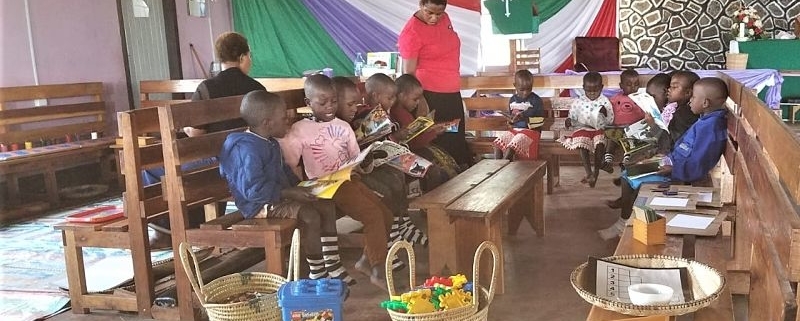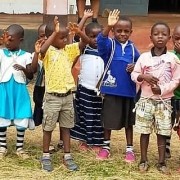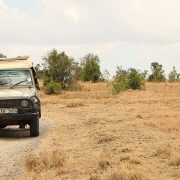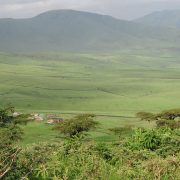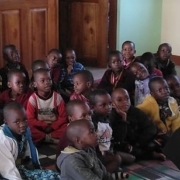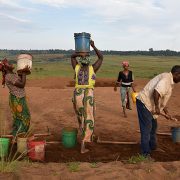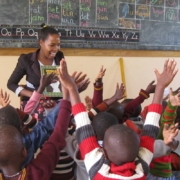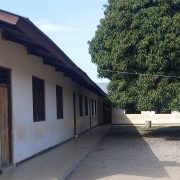Back in School after COVID-19 Closure
On June 29th schools in Tanzania re-opened in response to an order from the president. Because Twegashe Primary School is not a government school, we’re not required to follow this directive. But since there have been no reported COVID-19 cases in the Bushasha area, we decided it was safe for Twegashe to re-open with extra hand-washing and additional precautions. Small class size (only 15 children in each kindergarten session) is proving to have a health benefit we hadn’t anticipated!
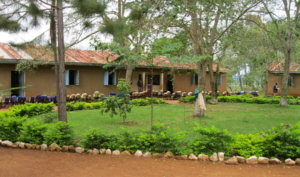
Government primary school in Bushasha
We learned from the principal of the local government primary school that they have been instructed to require all children eight years old and above to wear face masks. Since the directive exempted students under eight, and since kindergarten-age students at the government school will not be wearing face coverings, we have elected not to require masks for Twegashe kindergartners. We’re comfortable with this decision given the absence of any known cases in the area.
Although it seems very likely that coronavirus is not widespread in the village, getting a grasp of the situation throughout the country has proven quite difficult. In general, not a lot of news reaches remote Bushasha, and news of this pandemic is no exception. Most of what we know about the situation in the country is from news sources in the U.S. – and still we have to dig to find anything!
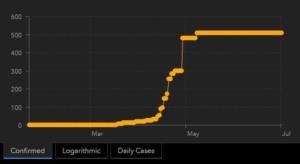
From Johns Hopkins Coronavirus Resource Center
Unlike most of its neighbors, Tanzania never went into official “lockdown,” aside from closing schools, suspending international flights and cancelling sporting events. All of these suspensions have now been lifted. In the early days of the pandemic the Tanzanian case number on the Johns Hopkins COVID-19 Dashboard was a more-or-less exponential curve, with a few jumps and plateaus as chunks of data were released. But since April 29 Tanzania has not released any new data. The count on that date was 509 COVID cases. Meanwhile, in neighboring countries the number of cases continues to rise. Not surprisingly, Kenya is far in the lead, with almost 7,000 cases as of July 2.
In making the announcement about schools re-opening, the government reported that the number of cases has declined considerably. It said there was therefore no need to keep schools closed. However no specific data was cited. The U.S. Embassy in Tanzania said this in their latest health alert on June 30: “Despite the opening up of sectors of business and society throughout Tanzania, the risk of contracting COVID-19 through community transmission remains elevated. The Embassy has recommended that U.S. government personnel and their families exercise continued caution in day-to-day activities (e.g., limiting entry of individuals into your home) and take steps to limit potential exposure while outside the home.” The Embassy is located in Dar es Salaam, which had the majority of reported cases in the early days of the outbreak. There were also substantial numbers in Zanzibar. Our hope is that thanks to the limited mobility of most of the Tanzanian population, the virus hasn’t yet made it all the way across the country and out to the village of Bushasha.
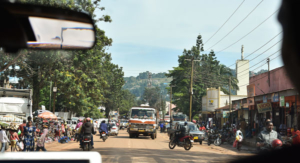
Main street of Bukoba, the closest town to Bushasha
But this means we feel a responsibility to help keep things this way. Our founder and board chairman, Michael Banobi, has remained in Tanzania throughout this pandemic. He continues to oversee construction, and is now also coordinating the resumption of classes—providing support for the teachers, food for the cook to prepare, daily water for handwashing, and so on. Michael can’t avoid trips to town to get supplies, but he exercises caution as much as possible. Plenty of other people from the village also travel to town occasionally, so all he can do is hope (and encourage!) that they exercise caution as well.
We’ve also exercised caution by avoiding bringing in contractors from parts of the country where cases of COVID-19 have been reported. Tanzanian construction technician David Suddy has been helping to supervise our construction project on-and-off since last November. He was at his home in Arusha when the pandemic began, and we elected not to have him return for the time being. Instead, he is providing guidance remotely – granted, a bit more of a challenge than communicating remotely in the U.S.!
We’re delighted to have Twegashe’s kindergartners back in school. But like people all around the world right now, we’re wondering what the future holds. In Bushasha, where there’s no reliable data and so little information of any kind, it’s especially hard to predict. But as the situation unfolds, we’ll do whatever we need to do to keep our students safe.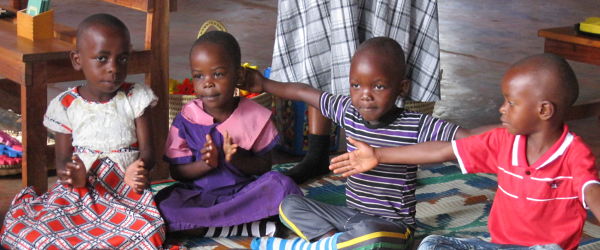
* Johns Hopkins Coronavirus Resource Center, https://coronavirus.jhu.edu/map.html, accessed on 7/2/2020.

